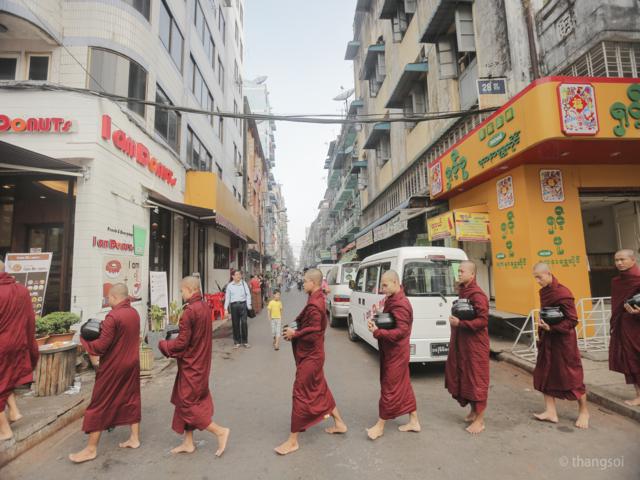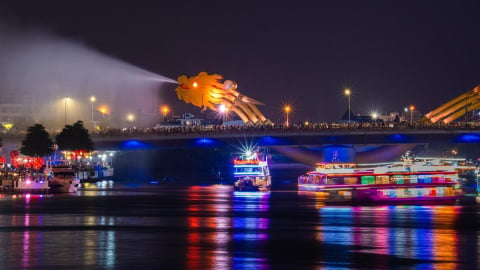Article and photos:Le Thang
Unlike other places in Myanmar I have been to, Yangon is a diverse and unique city. My first impression of Yangon was the architecture and the people. The characteristics of the intersection between Buddhist culture and capitalist civilization, brought by the British when they ruled here, created a strange city, old but also new. I saw here different schools of architecture. The religious diversity includes Buddhism, Islam, Christianity along with the works and cultural features associated with the lives of local people.
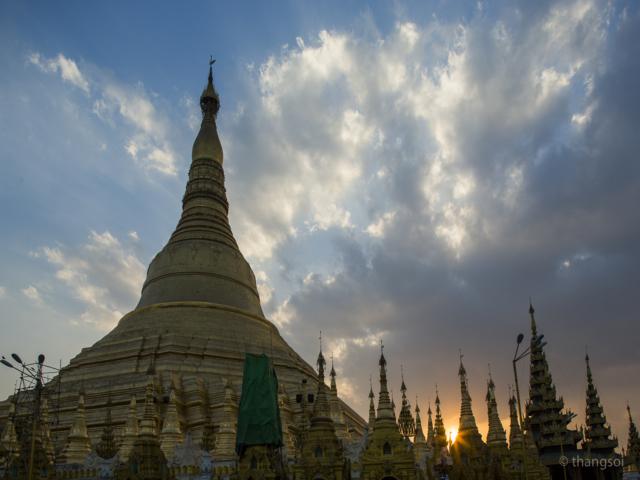
The fusion of Buddhist culture and capitalist civilization, brought by the British when they ruled here, created a strange city, old but also new.
The hotel where I stayed was located on an old street in Downtown Yangon and was on a walking route that was “circulated” in a travel book. I started exploring Yangon along that route. Yangon was strangely peaceful in the morning, with countless pigeons, flocks of them flying down to the street, eating the food that people shared with them. When a car passed by, the flock of birds flew up and covered the old sky.
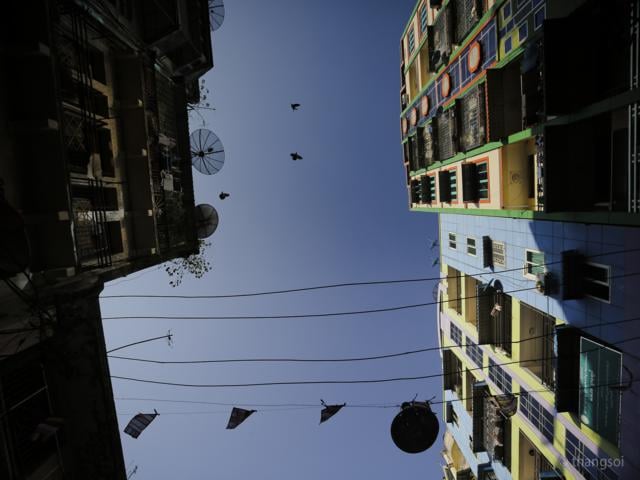
The neighborhoods have a very unique way of naming, each parallel street is numbered in order, very easy to remember when looking for a place to go. Markets are everywhere, with a full range of civilian goods and especially street food and drinks. I walked the whole route in the bright sunny morning of Yangon, the stop was a square next to Sule Pagoda, this is the administrative center with headquarters buildings that still have the original British architecture and other unique constructions.
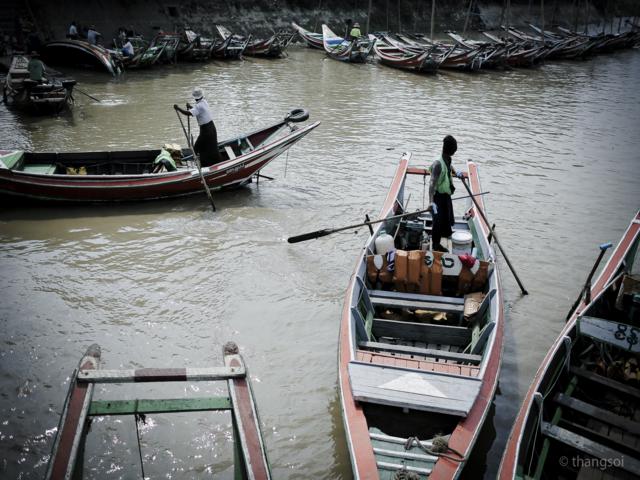
Down the river bank, past the well-preserved buildings is the ferry terminal to the suburbs. I bought myself a ticket to cross the river, which is a bit strange because the ticket price for tourists is 20 times higher than for locals, but still very cheap compared to other transportation services in Vietnam, and most importantly, I got to travel among the seagulls, and see a peaceful, simple village not far from a giant city.
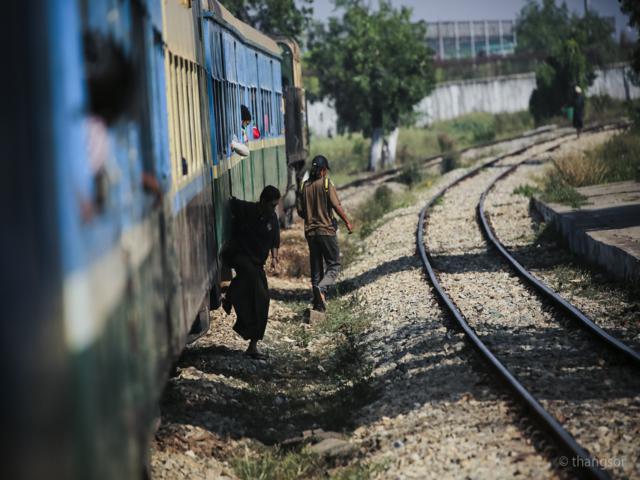
Yangon's transportation is also considered a unique feature of this historic city. In addition to the colorful means of transport, the British brought and left Yangon a legacy, which is the inner-city railway that circles the city. Yangon residents still consider this an effective means of transport, especially for the poor workers, while for tourists, this is an ideal means and environment to experience the daily life of the locals. Like ferry tickets, train tickets for tourists are also a bit more expensive. It takes about 4 hours for such a journey, a circle of life surrounding Yangon.

I am looking for Shwedagon Pagoda, Yangon's architectural masterpiece, which I saw as soon as I set foot on this land. Almost every Myanmar person dreams of making a pilgrimage to this legendary pagoda, the thousand-year-old pride of Yangon and the whole country of Myanmar. Shwedagon's golden tower is 99m high, surrounded by 1,000 small pagodas with vivid and unique architectural features. I heard that the pagoda is plated and carved with a total weight of 90 tons of gold and tens of thousands of diamonds and precious stones... This is truly an unimaginable wonder.
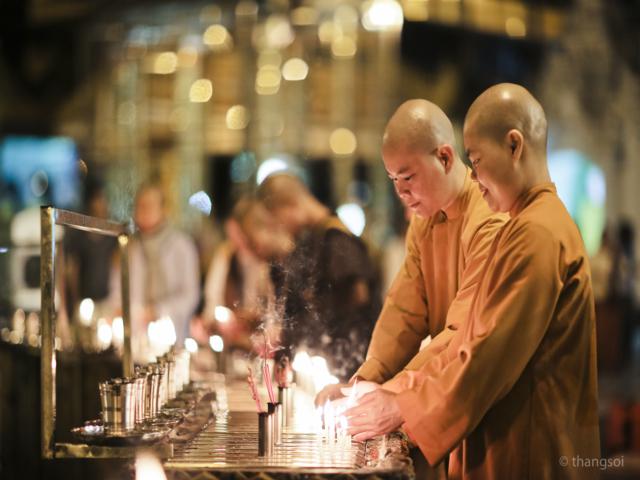
I arrived at the golden pagoda in the middle of the afternoon, walked around, took photos until my legs were tired, until the sun set, the pagoda was lit up with golden lights but I still hadn’t explored all the spaces inside. Pilgrims had already covered the floor around the main tower praying. I was engrossed in taking photos of a group of Buddhists lighting candles one by one, when suddenly I was startled by a strange language saying “Hey, what are you taking photos of!?”. Obviously I was in Myanmar, suddenly I put down the camera and looked up, I caught the gentle smiles of monks from Vietnam who had made a pilgrimage here. They recognized me as a “fellow countryman”, asked where I came from, and the answer was “Hanoi”. It was so nice to suddenly meet people from the same country in such a magical place.
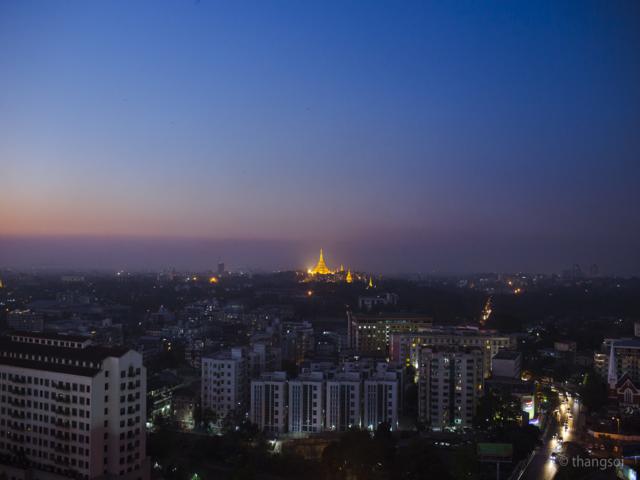
Saying goodbye to the monks, I left Shwedagon, the clock had already pointed to 9 pm. Yangon night was strangely peaceful, the bustling city that was noisy during the day seemed to be fast asleep, the streets were sparsely deserted, only occasionally did I see a car speeding by.
Yangon is the former capital of Myanmar, from 2006 onwards. Along with the ancient streets in Downtown, Yangon owns skyscrapers and large commercial areas. I am in Yangon, on my last day, after wandering around shopping for souvenirs at the famous Bogyoke Aung market, a market where tourists can buy everything from Myanmar, from industrial products, old colonial items left over to exquisite handicrafts produced all over the country.
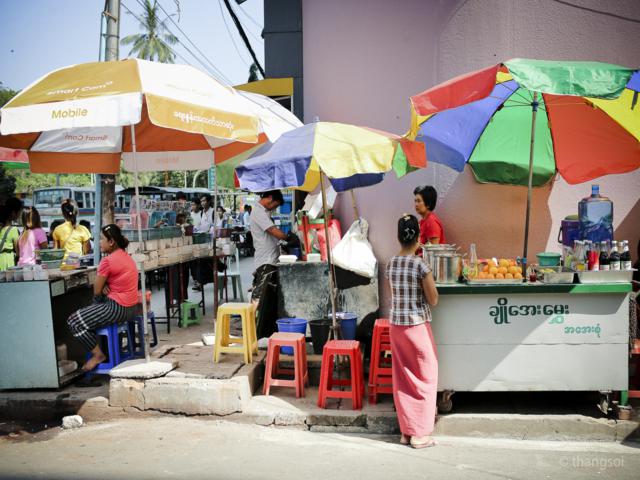
Myanmar also has another corner, with a modern look like other young cities. Those are skyscrapers, and in Yangon there are often luxury bars, possessing great views. Of course, I could not miss the opportunity to enjoy a drink here and watch the city from such a place. I spent my last afternoon sitting on the rooftop of Yangon's tallest building. From here, I could see every corner of the city. It was a special feeling to see all the scenery from such a place, I saw every neighborhood, every pagoda, river, port. I saw again the routes I had passed during my days wandering around and exploring Yangon.

The sun gradually set, the sunlight gradually disappeared on each old building, the golden Sule Pagoda rose high against the dark purple background in the space of Downtown. On this side, Shwedagon was golden in the afternoon light and then glowed in the light mist on the horizon. Goodbye Yangon, goodbye Myanmar, see you again on another journey.
More information:
+ Means:
To Yangon by air, there are several options:
- Fly with Vietnam Airlines from Hanoi, Ho Chi Minh City
- Fly with Air Asia, transit in Bangkok
+ Travel:
- Go to Yangon from Inle, Mandalay, Bagan... by bus, average price 20 USD, equivalent to 22,000 Kyat
- Moving around the city by taxi, price is about 350 - 400 Kyat, equivalent to 7,000 - 8,000 VND
- Travel around the city by public transport, such as buses, "lam" cars, "xich lo" cars, boats and ferries.
+ Currency: 100 USD is equivalent to about 9,000 Kyat. In Myanmar, USD can be used but it must be new and not dirty. Low denomination USD bills have low value.
+ Accommodation:
- Hotels and motels in Yangon are quite expensive compared to Vietnam, the lowest is about 30 - 40 USD/day and night, equivalent to 27,000 - 35,000 Kyat
- Luxury hotels in Yangon cost around 1,000 USD/night, equivalent to 9,000 Kyat.
+ Cuisine:
- There are all kinds of restaurants in Yangon, from luxury to affordable, from European to Asian…
- Yangon's street food is quite interesting, especially in the small markets in Downtown.
+ Shopping: Bogyoke Aung Market in Yangon has all Myanmar products, the prices are very cheap but visitors should not forget to bargain.





